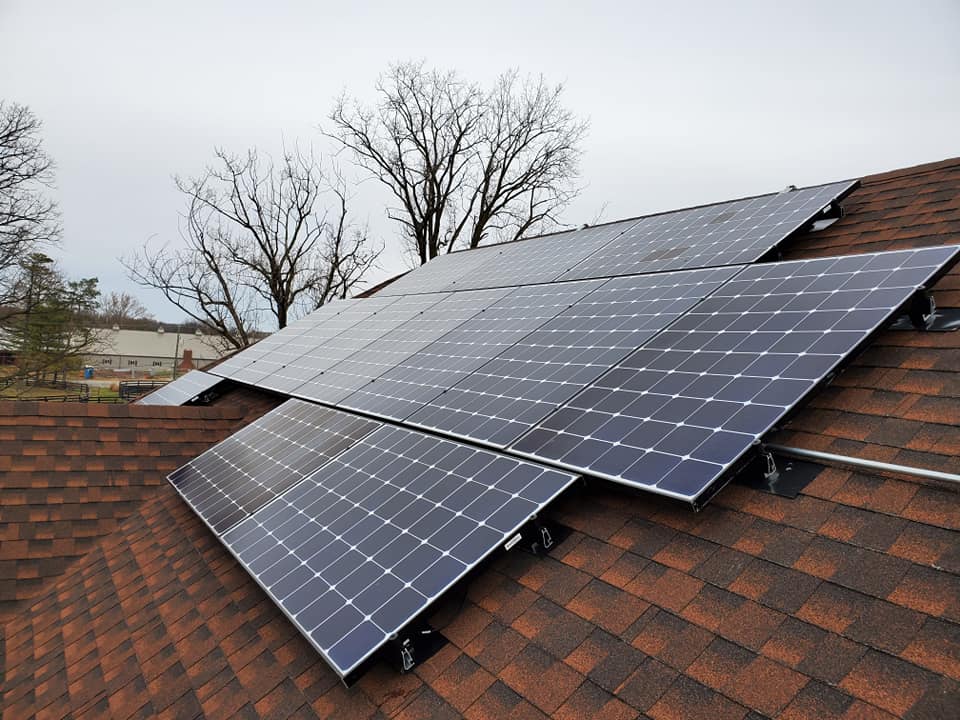Like the foundation in your home, having strong foundational elements in a solar system that can weather storms, intense heat, and wind forces is arguably the most important feature to ensure the structure can still provide rigidity, stability, no leaks, and safety for 20+ years. These foundational elements of a solar system are called the racking.
When thinking about having a solar array installed, you will find yourself choosing between either a roof-mounted or ground-mounted system. Your choice will be influenced by factors such as local requirements, budget, space, location, and your preferences. In this article, we will explore the roof-mounted systems, expected costs, pros & cons, etc.
Roof-mounted systems are the most common method of installing solar arrays. The roof acts as the base support of the solar system. It is the most preferred option for city dwellers. The configuration involves installing a series of flashing to attach to the underlying truss members, and a rail system that attach the panel to the roof. Rooftop solar systems can be installed via various configurations including railed, rail-less, shared-rail, and at roof. Homeowners and Solar Design Professionals usually choose one that best meets the needs of that roof. However, the shared-rail configuration is the most popular since it is the most cost-effective.
In the above photo you will see a black metal aluminum flashing. Beneath that flashing is a 3 ½-inch stainless steel lag bolt, which was pre-drilled and sealed using a weatherproof caulking, screwed into a rafter. This provides the mechanical means to secure your solar system to your roof, and when following best practices, will not leak.
Immediately above the flashing is the L foot, which provides lift, plus serves as an attachment means for the lateral backwards D-shaped rail. The rail will span the entire width of your solar array and is used to provide support for the modules to overcome the potential downward forces from snow. Using clamping methods, the rails also provide a mechanical means to provide support from the uplift and torsion from wind loads. Lastly, the ground lug provides the means for grounding and bonding your entire roof top solar system and protecting from lightning strikes.
Costs
The reason why roof-mounted panels are the most common type of solar systems is that they are easy and faster to install. However, the condition of your roof is going to play a critical role in determining the overall costs of the installation. This is because roof-mounted arrays need to be placed on a well-maintained roof that can last for at least 20 years without needing replacement. Thus, if your roof is over ten years old, it is likely that you are going to have to replace it during the panel system’s lifetime. Uninstalling and reinstalling solar arrays is a complicated, arduous, and therefore, expensive process. Thus, an old roof will increase total costs.
Space
There is a limit to the size of the system you can place on your roof. While this may limit the amount of power you can generate, it allows you to preserve your property’s usable green spaces.
Aesthetics
A roof-mounted system is typically less conspicuous. Nonetheless, this depends on your house’s positioning. If the front side of your house faces the south, your solar arrays will be very conspicuous. However, if the house faces north, it means you will have the option of placing the panels on the backside of the roof. This makes them less noticeable.
Positioning
When installing solar arrays on the roof, you will be limited by factors such as the type of roofing, angle, and direction. For instance, slate roofs cannot be installed upon, but metal roof, shingles and Spanish tiles are all acceptable. A steep pitch will cause the need for additional safety measures to be taken, and longer installation times, thus a higher installation cost than a low slope roof. Other considerations include obstructions such as skylights, chimneys, buildings, and trees as they may cast shadows on the panels, thus limiting the overall production.
As mentioned earlier in the article, roof-mounted systems are one of a few options when considering using solar to power your home. In a conversation with an energy advisor, you can evaluate every option available and see what works out best for your situation. To learn more about ground-mount options for solar installations, you can visit the other article (insert GM article) in our knowledge center.





